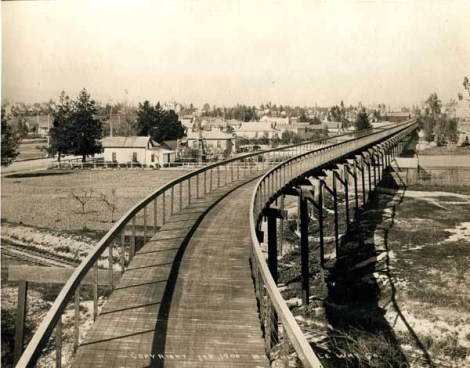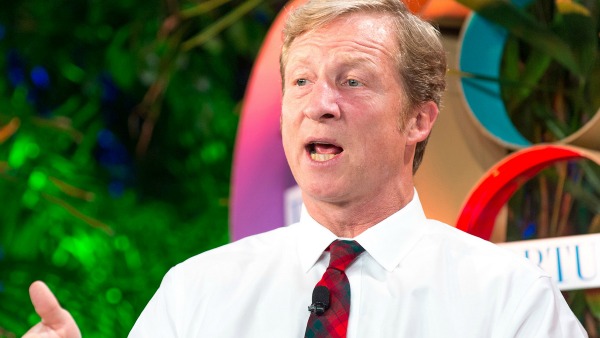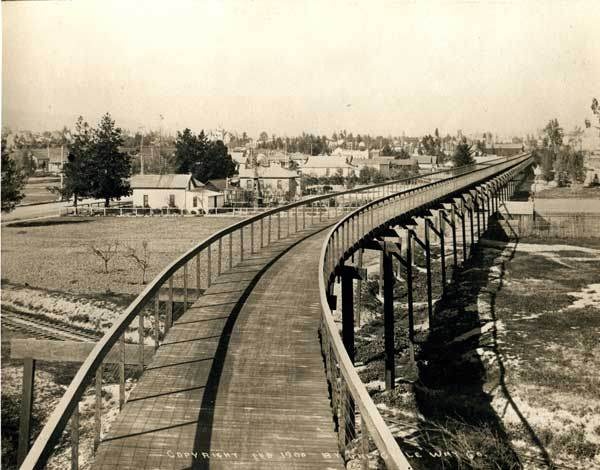
Pasadena Museum of History
Back in 1897, a structure called the California Cycleway came very close to beautiful existence. The elevated structure would have provided a smooth, flat, uninterrupted ride for the nine miles from Pasadena to downtown. (You can see a Google map of the proposed route here.) Man, bike infrastructure proposals were so much better when bikes were the only game in town.
The California Cycleway was the brainchild of one Horace Dobbins, a wealthy man and cycling fan, who at the time was in good company. Cycling was very cool in 1897. People with money were into it. Los Angeles had only 500,000 inhabitants, and 30,000 cycled. The upkeep was going to come from a toll — 10 cents one way, 15 cents if you did a round trip — which was a lot more back then but nothing compared to the cost of gas.
Actually a mile or so of the Cycleway did get built — that’s what you see in the photo. Here’s a more detailed description, from the blog 90042, of the Cycleway’s proposed route:
The California Cycleway was an elevated wooden bicycle highway that was designed to go from Hotel Green in Pasadena down the Arroyo, past Highland Park and into Downtown Los Angeles, ending at the Plaza on Olvera Street. Part of the design was to be a completely uninterrupted path by bridging over obstacles like creeks, roads, train tracks, and maintain only the slightest of grades (no more than 3%) over the 9 miles of smooth wooden track over an elevation of 600 feet. The entire project would have cost an estimated $187,500 at the time, and included a casino called, “Merlemount” to be placed midway in Arroyo Seco Park.
So do I really need to tell you the end of the story? I don’t want to give it away, but the words “car” and “and then they built the Arroyo Seco Parkway” figure prominently.



